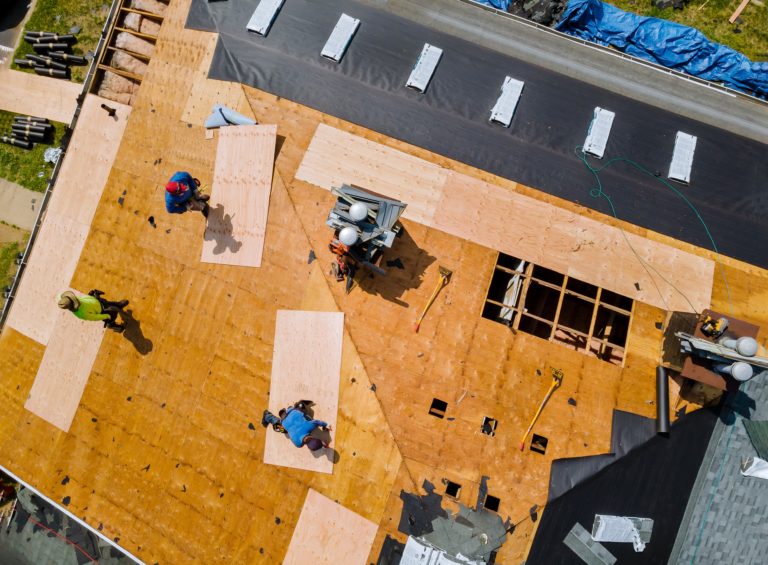
Pros and Cons: Felt vs Synthetic Roof Underlayment
That’s why knowing a little bit about underlayment is important in making an informed decision. The best roof underlayment may be the difference between a
Whether clay, slate or asphalt, shingles are the part of a home’s exterior that most of us notice first. But a lot more goes into its structure than what you see on the surface. It may start with a frame and end with flashing, but it’s good to know more about all the things that protect your home. The next time you take on some DIY roof repair, see if you can spot the following parts of a roof system.
The starting point of every roof is the frame. Also known as the truss, this portion of your home functions as the ‘skeleton’ of your roof’s structure. The rest of your roof will be built on top of this component. The wood portion that sits directly on top of the frame is the decking or sheathing. In the early stages of home building, you will notice the parts of a roof frame as the first step in the installation process.
Roof underlayment is often made of synthetic materials. It serves as a barrier between your shingles and your roof deck. If water manages to penetrate beneath your shingles, the underlayment can protect your roof so it doesn’t get any further. This part of the roof also helps with the expansion and contraction of the deck, adjusting so that water cannot collect. The underlayment should be replaced when it shrinks from aging or has rotted from water absorption.
Flashing consists of a thin sheet of metal that works to keep water away from certain parts of a roof. It is installed around surfaces like chimneys, skylights and vents that run perpendicular to the roof. It deflects water from these surfaces so it can’t be absorbed into the area between the surface and the shingles. If you happen to notice breaks or cracks in this component, it can be a sign it’s time to replace your roof.
Whether wood, slate or asphalt, shingles or tiles are one of the most familiar parts of a roof diagram to the layman. They come in a wide variety of styles including 3-tab, laminate, designer and starter strip. All of these types of shingles need to seal to one another to provide protection against the elements. Signs that your shingles may be on the wane include discoloration, curling, moss growth, cracks and granule loss. To prevent issues for shingle or tile roofs, be sure to get missing or damaged shingles replaced as soon as possible.
It might looks simple enough from the road. However, there’s more to the parts of a roof overhang than meets the eye.
Drip Edge – The drip edge is a thin metal strip that moves water into the gutters. It ensures that water won’t flow down the wall and be absorbed into the wood decking. The decking can rot and would require replacement if water is absorbed.
Fascia – This part of a roof that extends out from the wall meets with the edge and is perpendicular to it. The gutter moves flowing water away from your home and is attached to the fascia.
Gutters – Gutters and downspouts are often made of plastic or metal and are one of the most important elements of your home. Water flows through the gutter, into the downspout and away from your home’s foundation.
Soffit – If the eaves extend past the exterior of the house, the soffit is the underside affixed to the fascia. Some have perforations or openings that enable ventilation into the attic. This can work to prevent moisture buildup and avert water damage.
Shingles may be the ‘face’ that your roof shows to the world. However, a lot of different parts of a roof keep your home dry and functional. That’s why damage to any of these parts can mean water leaks or maintenance issues that need to be assessed as soon as possible. Be sure to prioritize consistent roof inspections so damage is noticed before it leads to more serious issues.
If you think some part of your roof might be in need of repair or replacement, reach out to Dr. Roof today at 1-818-514-1769 to get your free estimate!